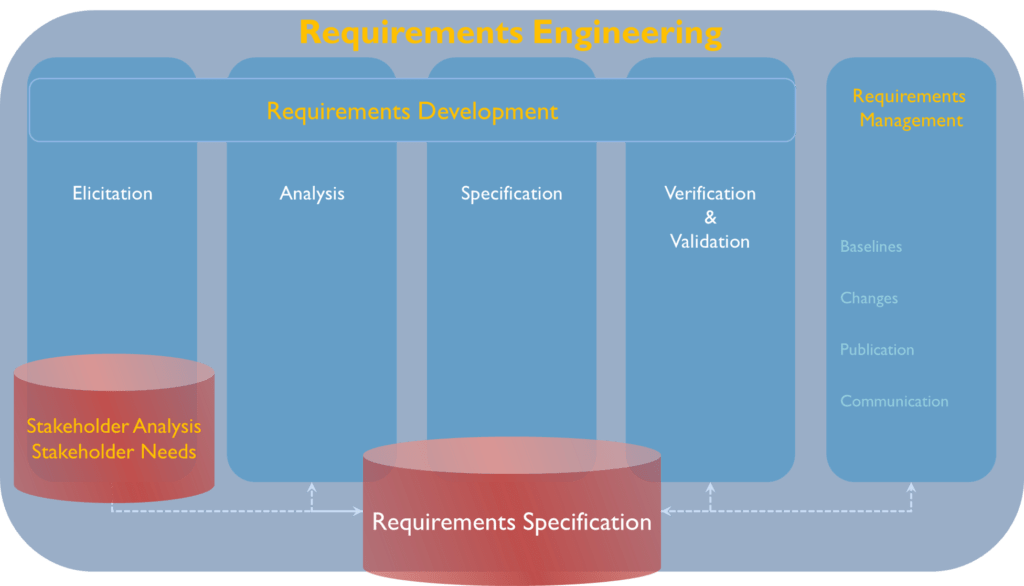A Requirements Specification is a container for requirements and requirements-related information that serve as a basis for the design of a specific System or System Element.
The Requirements Specification is one of the outcomes of the requirements engineering process and typically has the following inputs:
- Stakeholder Analysis
- Stakeholder Needs
- Prose: e-mails, expectations, demands
- Models: Use cases, user stories, scenario’s, …
- Application / operation descriptions: CONOPS, …
- Existing specifications
From these inputs the System or System Element Requirements are derived. This takes place in the Analysis, Specification, Verification & Validation and Requirements Management steps of the Requirements Engineering process.

Requirements Specification Content
- Requirements Analysis
- specifying the primary and secondary functions of the System or System Element (= System-of-Interest (SOI))
- specifying the critical values of quality characteristics of the SOI
- General conditions & prerequisites
- conditions and prerequisites that apply to all requirements
- specification of applicable conditions during operational use (e.g. environment, climate, temperature, humidity, weather, road, crowdedness, …
- Requirements
- for each function specify and quantify the required properties [Ref 1]
- SOI characteristics that are not specific for a function
References
Terms
⌊Requirement⌋,
Pages
[Requirement types], [example Requirements Specification]
Articles / books /sites
[Ref 1] Competitive Engineering, Tom Gilb, chapter 5 Scales of Measure
* ⌊example quantification Gilb⌋
Quotes
A Requirement Specification is a collection of the set of all requirements that are to be imposed on the design and verification of the product. The specification also contains other related information necessary for the design, verification, and maintenance of the product. – Ivy Hooks [Art 1]
Related articles
[Art 1] What Is The Difference Between A Requirement And A Specification? – Ivy Hooks
![]()
